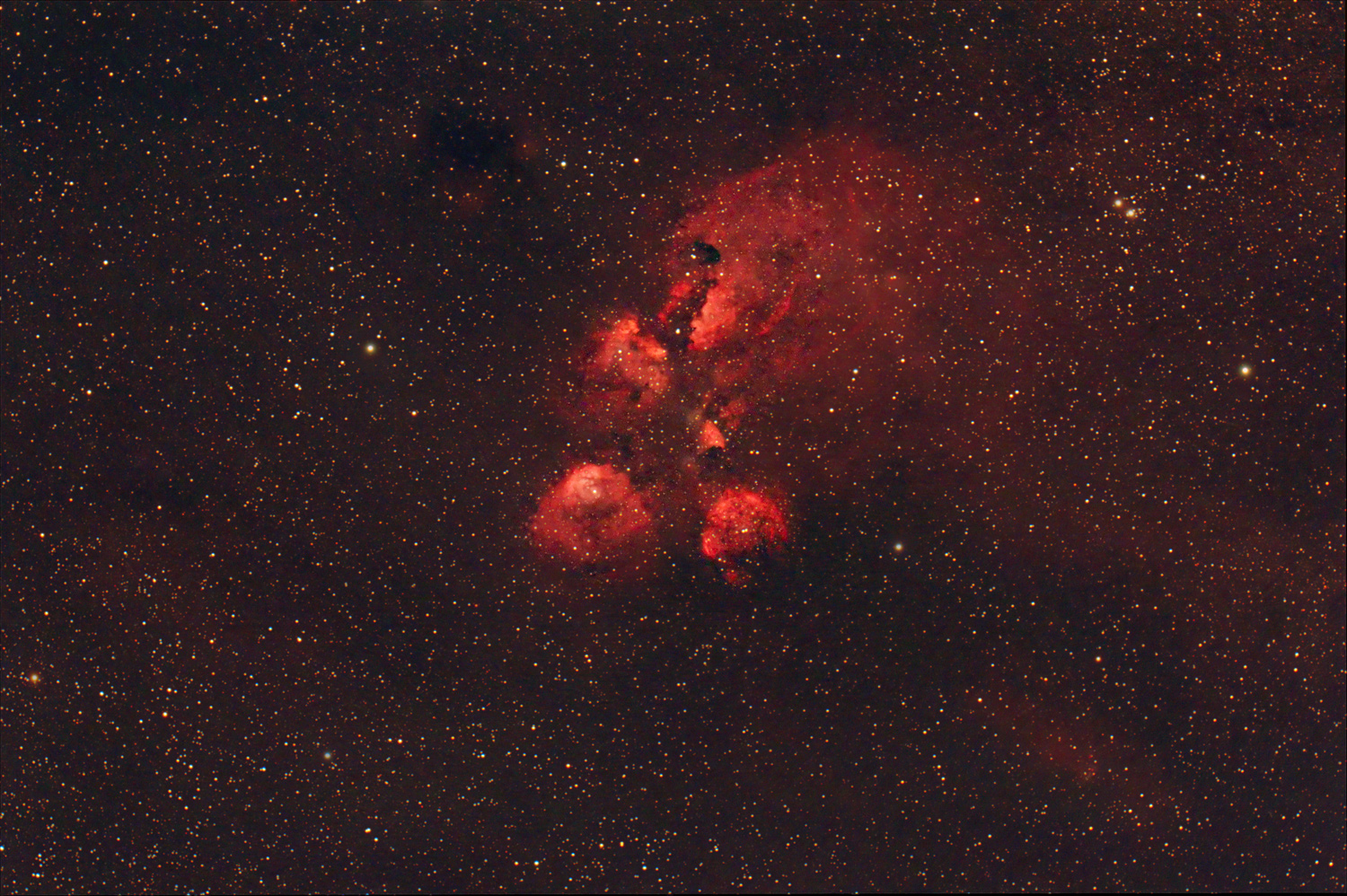
|
La nebulosa Zampa di gatto - NGC
6334 The Cat's paw nebula - NGC 6334 A.R. 17h19m43s - Decl. -35°51'35" |
|
Questa foto della nebulosa Zampa di gatto (NGC 6334), visibile nella costellazione dello
Scorpione,
è stata scattata il 15 e 16 giugno 2012 dal Monte Labro (GR) al
fuoco diretto di un telescopio Takahashi TSA102 ridotto a f/6.3 su
montatura Avalon Emmeuno con Skyscan. La foto è la somma di complessive 32 esposizioni da 8 minuti cadauna, con una fotocamera digitale Canon Eos 40D con filtro modificato, settata a 800 ISO che sono state effettuate con inseguimento mediante rifrattore 100/500 in parallelo e autoguida Atik 16IC. Ho scartato alcune foto in quanto la rifrazione atmosferica aveva distorto troppo le stelle, trattandosi di un soggetto che, alla latitudine del Monte Labro (42°52' N) non supera mai i 15° di altezza sull'orizzonte. Successivamente i frames sono stati calibrati con DeepSkyStacker utilizzando 31 dark, 62 flat, 62 dark dei flat e 62 bias. I files sono poi stati sommati con Registar. E' stato applicato uno stretching, maschera sfocata e riduzione del rumore usando Photoshop CS4. Ho cercato di preservare le stelle per non bruciarle in fase di elaborazione. E' possibile vedere una foto del telescopio in funzione mentre fotografa l'oggetto (il raggio verde è stato aggiunto a parte per indicarne la posizione). This photo of the Cat's paw nebula (NGC 6334), in Scorpius, was taken on june 15 and 16, 2011 from Labro Mount, in Italy, near Grosseto, at the prime focus of a Takahashi TSA102 telescope reduced at f/6.3 using a Avalon Emmeuno mount.. The photo is the sum of a total of 32 frames, each of 8 minutes, with a Dslr camera Canon Eos 40D Rebel (filter modified) exposed at 800 ISO, giuding with a Atik 16IC autoguide on a refractor 100/500. I didn't use some pictures because the atmospheric refraction had distorted too much the stars, being a subject that, at the latitude of Labro Mount (42°52' N) never exceeds 15 degrees above the horizon. About processing. I calibrated the frames with Deep Sky Stacker using 31 darks of 8 minutes each, 62 flats, 62 darks of flat, 62 bias. Then I stacked and summed the resulting frames with Registar. At least I processed the resulting file with stretching, unsharp mask, noise reduction using Photoshop CS4. It's possible to see a picture of the telescope photographing the object (I added the green beam to show where the nebula was). |